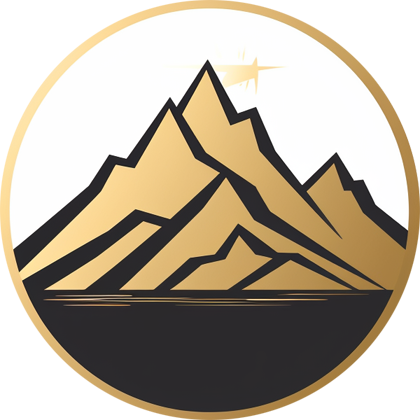
Arizona is a gold producing state, at most mines gold is produced as a byproduct. Read in the article about the history of gold mining in Arizona, about its gold mines and other facts and figures about gold mining in AZ.
Contents
- Is there Gold in Arizona?
- Where is Gold in Arizona?
- What is the History of Gold Mining in Arizona?
- How much gold has been mined in Arizona?
- What is the Current State of Gold Mining in Arizona?
- What Companies Mine Gold in Arizona?
- Where are New Gold Mines Explored or Developed in Arizona?
- Is it Legal to Mine Gold in Arizona?
- Where Can I Pan for Gold in Arizona?
- Is There Gold in Other US States?
Is there Gold in Arizona?
Yes, and the state has still an active gold mining industry.
- Arizona’s gold production comes from around six mines in the state, of which only one is a gold mine, the Moss mine (in operation since 2018). The others are copper mines with gold as a byproduct. This is no surprise, as Arizona leads the country in copper production.
- In the 1960s, Arizona was number 8 in the ranking of gold ever produced in US states.
- The US Geological Survey lists more than 5,00 sites with gold deposits in Arizona, most of them closed (for comparison: California has more than 20.000 gold sites), for example: Alto Vein Swarm, Bagdad, Bonanza Mine, Borina Mine and Cactus Mine.
- There are several gold exploration projects in the state that might lead to mining operations.

Key Takeaways:
| Fact | Explanation |
|---|---|
| Remember | Only one primary gold mine, most gold as a byproduct from Arizona’s copper mines |
| Gold Deposits | Yes |
| Discovery Year | 1774 |
| Discoverer | Manuel Lopez |
| Gold Mining Industry | Still active |
| Major Gold Locations | Yuma County, Yavapai County, Mohave County etc. |
| Major Active Gold Mines | Moss, as the only gold mine; copper mines with gold as a byproduct: Bagdad, Morenci, Safford, Sierrita and Pinto Valley |
| Mining Companies | Moss owned by Elevation Gold Mining, the first four copper mines owned by Freeport-McMoRan, the last one by Capstone Copper |
| Panning Locations | Lynx Creek, Hassayampa River, Cave Creek area, Agua Fria River etc. |
The following map of Arizona shows the location of the first gold discovery and the location of the gold producing mines in the state.
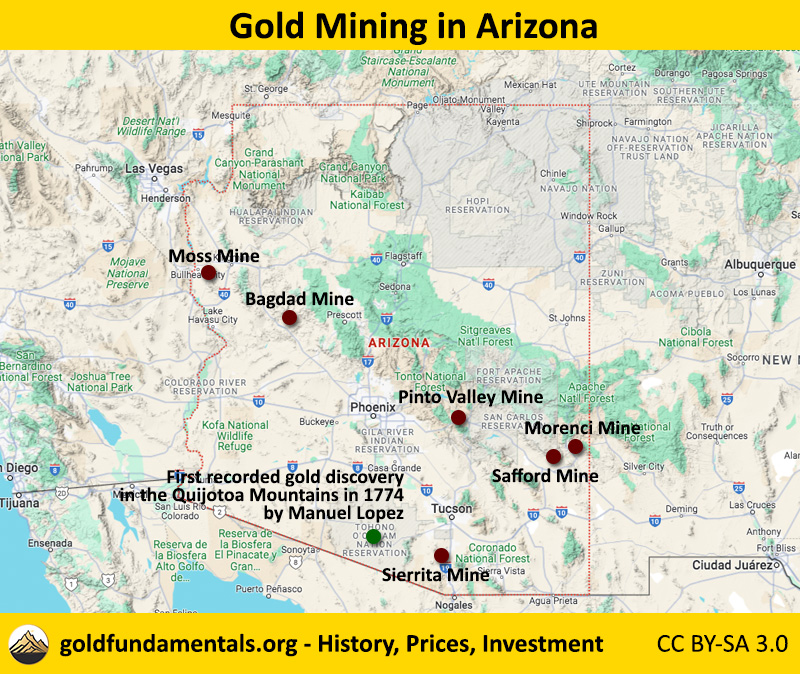
Sources: Mining Amigos, Mining Amigos, USGS, USGS
Check out the video about gold mining in Arizona:
Where is Gold in Arizona?
Gold in Arizona can be found in several regions, most notably:
- The Bradshaw Mountains in Central Arizona: Known for a history of rich gold mines, including the famous Crown King, Bradshaw Mountains have been a popular destination for gold prospectors.
- The Superstition Mountains: Located to the east of Phoenix, these mountains are famous for the legendary Lost Dutchman’s Gold Mine. Although the mine’s existence is debated, the area is still a popular spot for gold prospectors.
- The Wickenburg area, northwest of Phoenix: This area has produced significant amounts of gold, mainly from the Vulture Mine, one of Arizona’s oldest and most productive gold mines.
- The Yuma Desert: Situated in southwestern Arizona, it includes the Cargo Muchacho Mountains where gold mining dates back to the Spanish explorers.
- The Mojave Desert in western Arizona: Known for the Gold Road Mine and the Oatman Mining District, where gold was discovered in the early 1900s.
- The Cochise County in Southeastern Arizona: Known for the old mining towns of Tombstone and Bisbee, where gold and other minerals were mined.
Remember, if you’re interested in gold prospecting in these areas, it’s important to be aware of the current mining laws and regulations. Additionally, much of the land in Arizona is either private property or under the control of the federal government, so it’s necessary to obtain proper permissions before prospecting.
See also the map of the gold mining districts of Arizona (from 1965):

Sources: University of Arizona, USGS
What is the History of Gold Mining in Arizona?
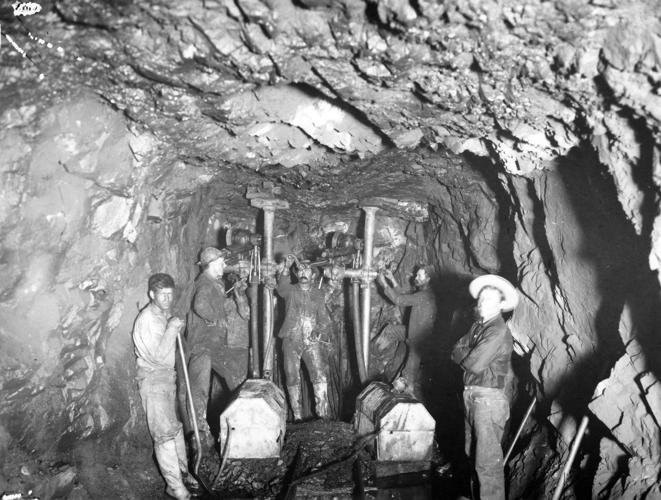
Who discovered gold in Arizona?
The first discoveries of gold in Arizona can be attributed to the Native Americans and the early Spanish explorers. The first recorded gold discovery is from the Spanish priest Manuel Lopez at the Quijotoa mountains from 1774.
However, it was the influx of American prospectors in the 19th century that truly kickstarted the gold mining era in the region. A significant find was made in 1862 in the Weaver Mountains, near Prescott, by a group of prospectors led by a man named Pauline Weaver. This discovery catalyzed a wave of migration to the area, with prospectors eager to find their fortunes in the Arizona soil.
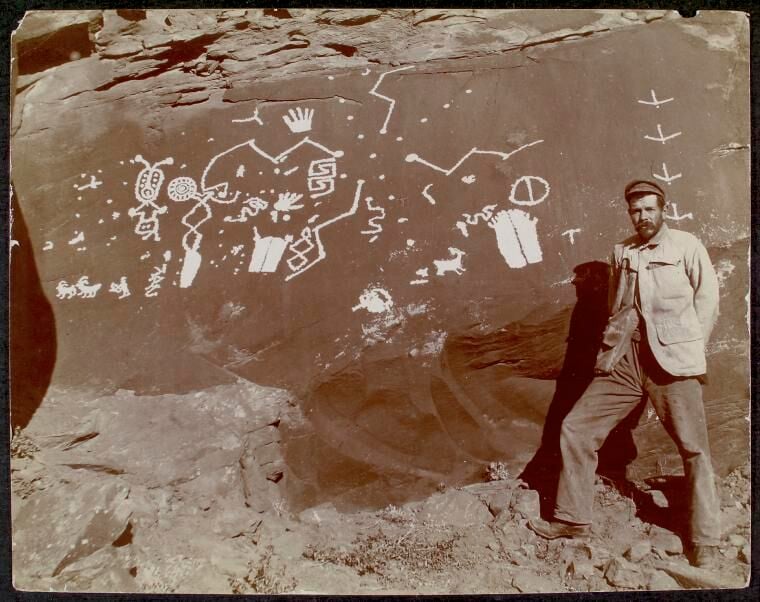
Was there a gold rush in Arizona?
While Arizona did experience a surge in gold mining activity, it didn’t witness a gold rush on the scale of California or Klondike. However, several smaller rushes did occur. The most notable among them was the rush following the discovery of the rich Vulture Mine in 1863 by Henry Wickenburg. The mine, located near the town that now bears Wickenburg’s name, produced over 340,000 ounces of gold until its closure in 1942. This discovery led to a flurry of mining activity in the region, establishing Arizona as a significant gold-producing area.
Start of industrial mining
The dawn of industrial mining in Arizona began in the late 19th century. The Bisbee and Jerome mining districts, traditionally known for copper, started yielding substantial gold outputs by the early 1900s (see also graph below).
The introduction of cyanide leaching in the 1890s revolutionized gold extraction, allowing miners to profit from lower-grade ores. This shift marked a transition from placer to hard rock mining, significantly boosting gold production.
Major mines, like the Morenci Mine, established in 1872, and the Bagdad Mine, opened in 1882, became landmarks of industrial mining in Arizona. By the early 20th century, these mines were not only extracting gold but also contributing to the state’s rapid economic and demographic growth.

Source: USGS
How much gold has been mined in Arizona?
Arizona produced around 17,500,000 ounces of gold, of which around 13,000,000 ounces of gold was produced from 1860 to 1965; see graph below.
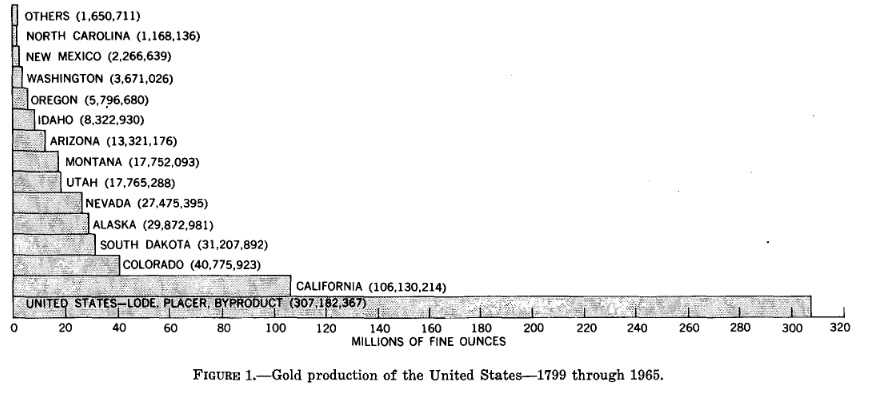
Source: USGS
What is the Current State of Gold Mining in Arizona?
- Most gold mining comes as a byproduct from Arizona’s copper mines.
- After the closure of the Gold Road mine in 1998, Arizona did not have a primary gold mine for 20 years.
- This changed in 2018 with the new and only gold mine in the state, the Moss Mine, owned by Elevation Gold Mining. It extracts gold from the Walker Lane Gold Trend which lies mostly in Nevada.
What are Arizona’s gold producing mines?
The US Geological Survey Minerals Yearbook lists in its most recent overview of 44 leading gold operations in the US three mines that produce gold: the aforementioned Moss mine, and two copper mines with gold as a byproduct: the Bagdad and Morenci Mines.
Apart from the USGS list, there are other copper mines in the state that produce: Safford Mine, Sierrita Mine and Pinto Valley Mine.
The US state leading the ranking is Nevada with 27 operations, followed by Alaska with four operations.
List of gold operations in Arizona:
| Rank | Operation (Location) | Majority Owner (2024) | Qty 2021 (2020) |
|---|---|---|---|
| 27 | Moss (Mohave) | Elevation Gold Mining Corp. | 905 (1,310) |
| — | Bagdad (Yavapai) | Freeport-McMoRan Inc. | — |
| — | Morenci (Greenlee) | Ditto | — |
| — | Safford* (Graham) | Ditto | — |
| — | Sierrita* (Pima) | Ditto | — |
| — | Pinto Valley* (Gila) | Capstone Copper Corp. | — |
Explanation:
Rank: a comparison of the output of US mines. Therefore, Moss Mine, is ranked number 27 of all US gold mines. The other mines have no ranking, as their gold production numbers are not disclosed. Eight of the ten biggest mines are in Nevada and one in Alaska and one in Colorado.
Quantity: in kilogram; there are approx. 32 fine ounces in one kilogram
*: not part of the USGS list of 44 gold mining companies of the US

Based on the table above, the following overview lists the gold operations with more information:
- Moss Mine: open pit gold and silver mine, located in Mohave county, owned by Northern Vertex Mining. In operation since 2018. Only primary gold mining operation in Arizona. Gold production in 2022: 31,094 ounces (967 kg), mine life till 2025
- Bagdad Mine: open pit copper mine, located in Yavapai county, owned by Freeport-McMoRan, copper claims first stalked in 1882, mill since 1928, numerous ownership changes. By products: molybdenum, gold and silver, mine life: 2112
- Morenci Mine: open pit copper mine, located in Greenlee county, owned by Freeport-McMoRan, underground mining since 1871, conversion into open-pit in 1937, mine life: 2051
- Safford Mine: open pit copper mine, located in Graham county, owned by Freeport-McMoRan, gold and silver as byprodcuts, production since end of 2007, mine life till 2056.
- Sierrita Mine: open pit copper mine, located in Pima country, owned by Freeport McMoRan, in operations as underground mine since 1907, conversion to open pit in 1959, molybdenum, gold and silver as byproducts, mine life till 2094
- Pinto Valley Mine: open pit copper mine, located in Gila county, Pinto Valley has one of the largest copper reserves in the US, open pit mining since 1972, mine owned by Pinto Valley Mining, byproducts are molybdenum, silver and gold, mine life till 2039.

Sources: company websites, MDO, USGS
What Companies Mine Gold in Arizona?
The before listed mines belong to:
- Northern Vertex Mining Corp. (before 2021 named Northern Vertex Mining Corp.): owner of the Moss mine, the only primary gold mine in the state of Arizona; the publically listed company owns only this mine and the Hercules project in Nevada, for developing a gold and silver mine.
- Freeport-McMoRan Inc.: owner of most copper mines in Arizona that produce gold as a byproduct. Phoenix-based mining company founded as Freeport Sulphur Company in 1981, with several mergers throughout its history. The company is the world’s largest of molybdenum and one of the largest copper producers. The company has 24,700 employees and operations throughout Africa (Congo), North America (5 mines in Arizona, 2 in New Mexico and 2 in Colorado), South America (Chile and Peru), Europe (Spain) and Asia (Indonesia).
- Capstone Copper Corp.: a publically listed copper mining company, founded in 1987 and headquartered in Vancouver. It has 8,000 employees and five assets: four operations in North America (Pinto Valley in Arizona and Cozamin in Mexico) and South America (Montos Blancos and Mantoverde in Chile) and one project: the Santo Domingo copper-iron project in Chile.

Source: company websites
Where are New Gold Mines Explored or Developed in Arizona?
Mining Data Online lists five gold projects. Two are planned as copper mines with gold as a byproduct. Three of them are primary gold mines: Mexican Hat, Gold Basin Project and the Kingman Gold Project. In detail:
Mexican Hat Project
- Owned by GMV Minerals Inc.
- Located in Cochise county, in the south of Arizona
- Planned as an open pit heap leach mine
Kingman Gold Project
- Owned by Riedel Resources, Australia
- Located near Kingman in Arizona, in the Walker Lane
- Site was mined for gold until the 1940s
- In 2023 extension area of Kingman Project with new claims
Gold Basin Project
- Owned by Gold Basin Corp.
- Located in Mohave county, in the Walker Lane
- Planned as open pit mine
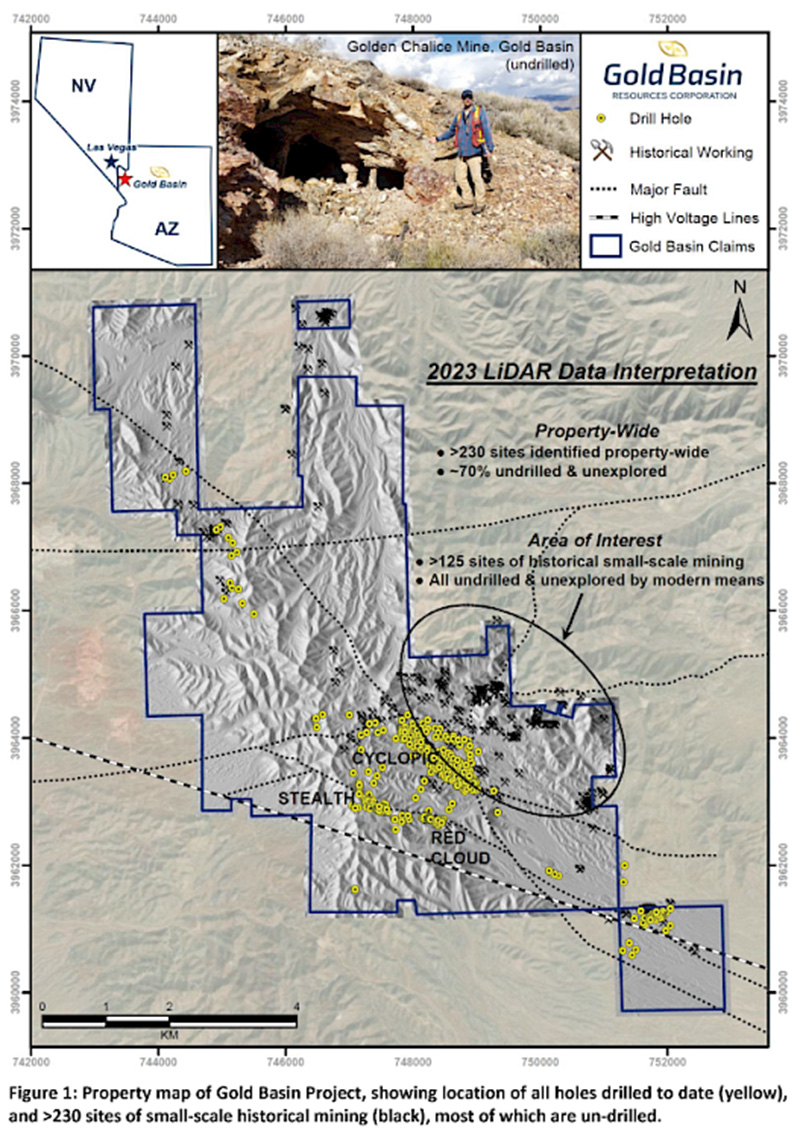
Sources: company websites, MDO
Is it Legal to Mine Gold in Arizona?
Yes, it is legal to pan for gold in Arizona on public lands as long as you follow the rules and obtain the necessary permits.
- Recreational gold panning is generally allowed on public lands, and there are several areas throughout Arizona where you can engage in this activity
- Additionally, it’s legal to gold pan in the national forests of Arizona.
- However, it’s important to respect private property and always follow all rules and regulations when prospecting for gold.
Sources: Arizona
Where Can I Pan for Gold in Arizona?
Check out the video about gold prospecting in Arizona at Lynx Creek:
Arizona has a rich history of gold mining, and there are many rivers and streams open for gold panning, with most of the state’s land being public and accessible for prospecting.
Some of the gold panning locations in Arizona include:
- Lynx Creek: Located near Prescott, Lynx Creek is one of the most productive gold panning areas in Arizona. The area is open to the public, and there’s a section of the creek that’s reserved for recreational gold panning.
- Lake Pleasant Regional Park: Situated northwest of Phoenix, this park allows for gold panning. It’s a popular spot for recreational prospectors.
- Wickenburg Area: Near the town of Wickenburg, there are numerous streams and washes where gold has been found. The Hassayampa River is particularly famous for gold panning.
- Cave Creek area: This area, near Phoenix, has been a gold mining center since the 1860s, and gold can still be found in the creek and its tributaries.
- Vulture Mine: Located near Wickenburg, this is one of Arizona’s most famous gold mines. Although the mine itself is closed, the surrounding area is a popular spot for gold panning.
- Goldfield Ghost Town: Near Apache Junction, this old mining town offers tours and the opportunity to pan for gold.
- Stanton: Located near the Rich Hill mining area, this is a historically rich gold area where prospectors can still find gold nuggets.
- Arivaca: This area is known for its placer deposits and is a favorite among experienced prospectors.
It’s important to be aware of any regulations and obtain necessary permits before engaging in gold panning in these locations.
Sources: American Gold Prospecting Adventures, University of Arizona
Is There Gold in Other US States?
Check out gold production in neighboring states of Arizona: Utah, Colorado, New Mexico, California and Nevada.
According to the U.S. Geological Survey (USGC), there are 11 states that mine gold and contribute towards the gold mining statistic: Nevada is responsible for the majority of gold output, around 72%, followed by Alaska (13%). 9 other contribute in sum to the remaining 15% of gold production: Arizona, California, Colorado, Idaho, Michigan, New Mexico, South Carolina, South Dakota and Utah.
